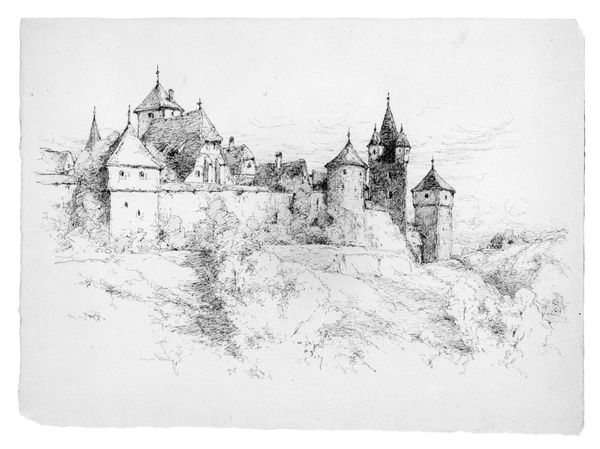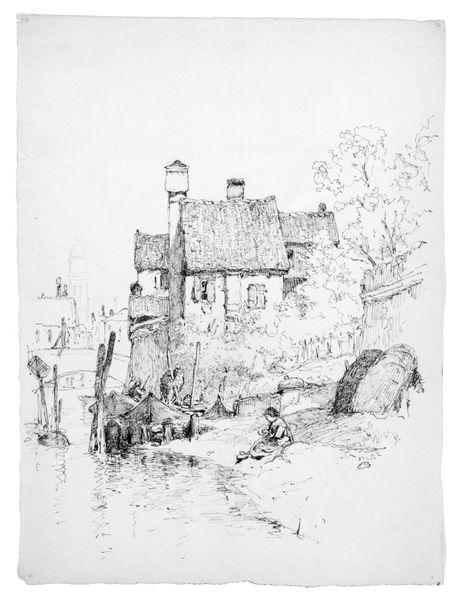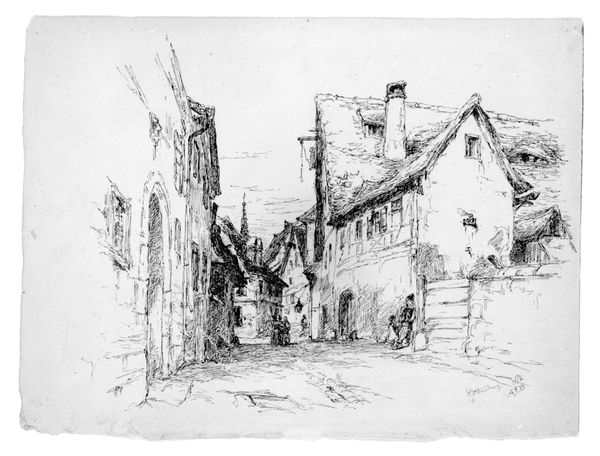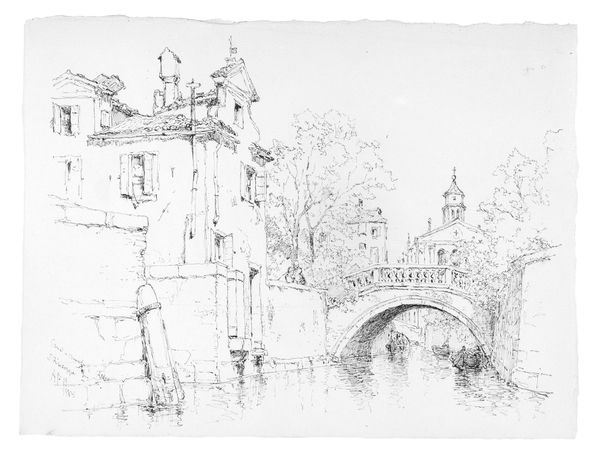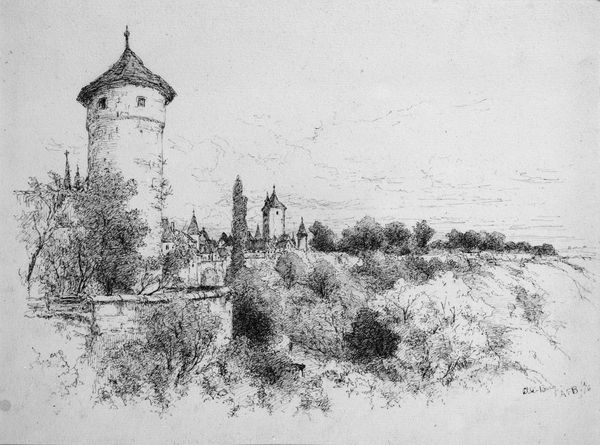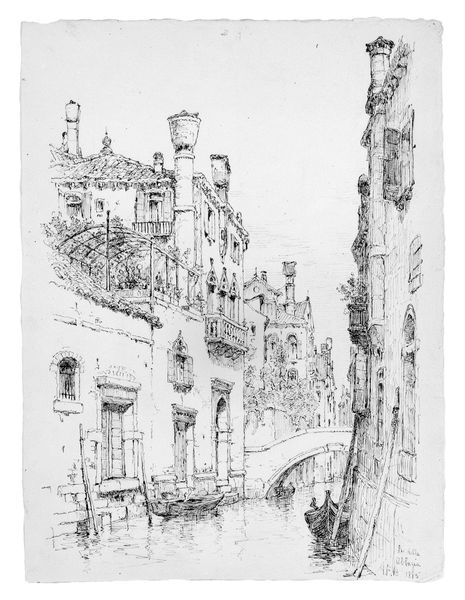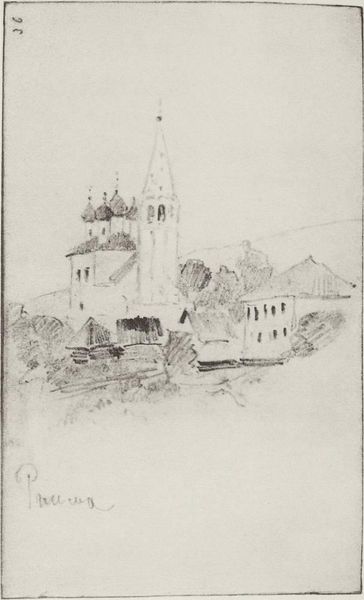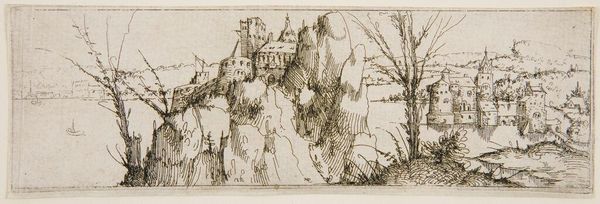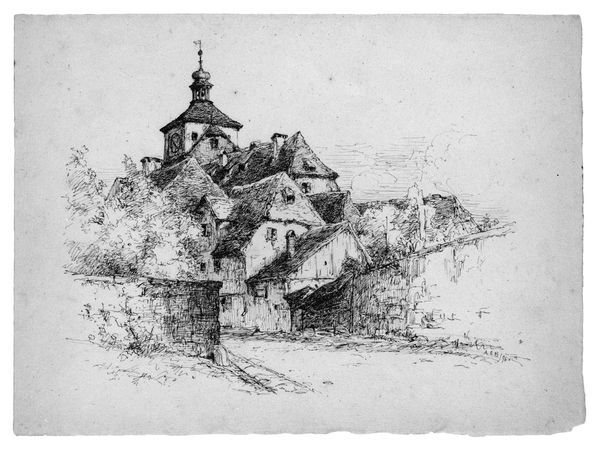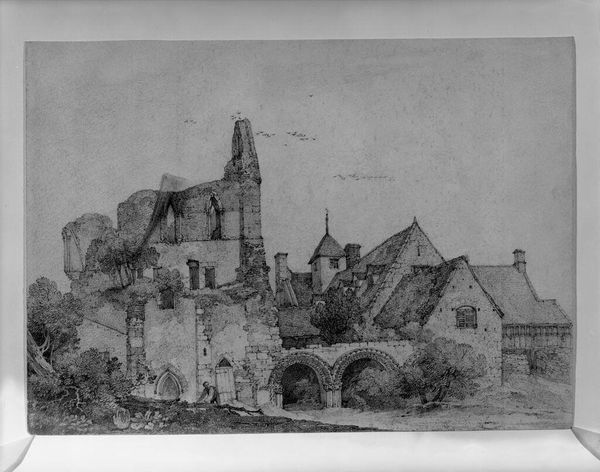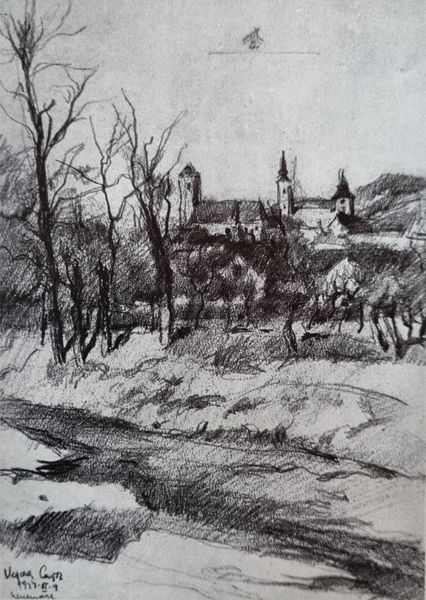
drawing, print, etching, ink, pen
#
pen and ink
#
landscape illustration sketch
#
drawing
# print
#
pen sketch
#
etching
#
pencil sketch
#
incomplete sketchy
#
landscape
#
ink
#
pen
#
cityscape
#
realism
Dimensions: 12 3/4 x 9 5/8 in. (32.4 x 24.4 cm)
Copyright: Public Domain
Editor: This is Andrew Fisher Bunner's "Sheet of Four Sketches of Germany" from 1876. It looks like a pen and ink drawing, maybe even an etching. It’s interesting how he presents these little landscape vignettes on one sheet; it almost feels like a postcard collection from a trip. What strikes you when you look at this piece? Curator: What I find fascinating about this sheet is the artist's framing of Germany through these sketches. Think about the political climate of 1876; the German Empire had only recently been unified. What imagery would an American artist choose to represent this nation? We see picturesque towns, fortified structures, seemingly untouched landscapes. Bunner seems to be engaging with and perhaps constructing a very specific visual identity of Germany for an American audience. Editor: So, these aren't just simple sketches; they’re communicating something about Germany as a unified nation? Curator: Precisely! And who gets to decide what constitutes a nation's identity? Bunner, as an American artist, brings his own cultural baggage and perspective. The choice to focus on architecture and scenery, avoiding industrial or overtly modern subjects, could be read as a deliberate attempt to portray Germany as a land steeped in history and tradition, suitable for American tourists and investment. Editor: I didn't consider the American perspective influencing his choices. It does make you wonder what he intentionally left *out* of the picture. Curator: Exactly. And it makes me consider who the intended audience of these images was, and how their perceptions of Germany might have been shaped by this kind of romantic representation. The placement of this drawing in the Met further cements this visual representation within the narrative of art history and influences public opinion of the past. What do you think, looking again, about these curated "snapshots" of Germany? Editor: Now I see it as less of a simple landscape and more of a constructed narrative – a curated view designed to communicate particular ideas about German identity to an American audience in the late 19th century. It's definitely food for thought. Curator: Indeed. It showcases how seemingly straightforward landscape sketches can be powerful tools in shaping perceptions of nations and cultures. I think this speaks volumes about the social and cultural role of art in that period, even today.
Comments
No comments
Be the first to comment and join the conversation on the ultimate creative platform.
